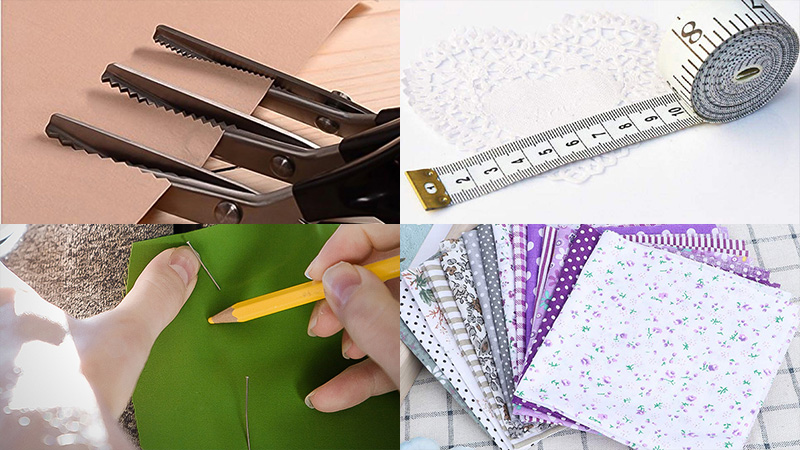
In the world of sewing, the array of tools and equipment at your disposal is akin to an artist’s palette, each item holding the potential to transform raw fabric into exquisite creations.
From novices stepping into the realm of stitching to seasoned crafters refining their skills, the significance of sewing tools and equipment remains constant.
These tools are the guiding stars that help measure, cut, and shape fabric into garments and décor that reflect creativity and precision.
With a plethora of options, whether it’s measuring tapes or intricate sewing machines, the right tools empower individuals to embark on sewing journeys with confidence, turning visions into tangible masterpieces.
1. Seam Ripper
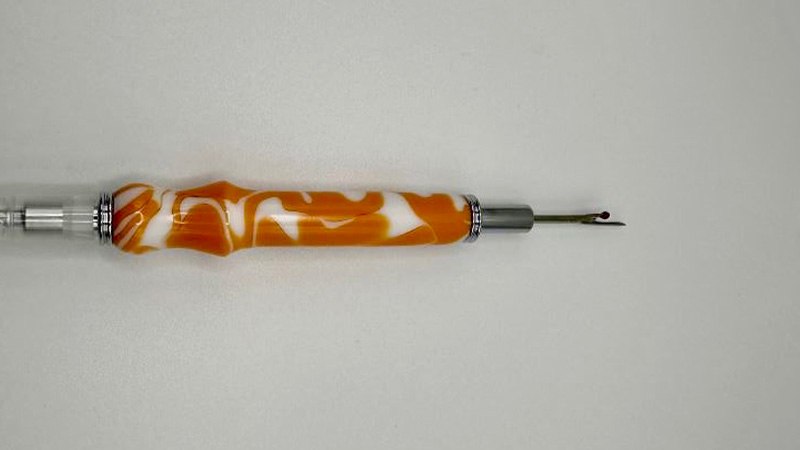
A seam ripper is a small, hand-held sewing tool that is used for cutting and removing stitches. It typically consists of three parts – a handle, a shaft, and a head.
The handle is designed to provide a comfortable grip for the user, while the shaft connects the handle to the head. The head is forked in shape, with a sharp cutting surface at the base of the fork.
This surface is used to slice through the stitches with precision and accuracy. Seam rippers are commonly used for a variety of tasks in sewing projects, such as removing unwanted stitches, ripping out hems and seams, and opening buttonholes.
They are also ideal for making alterations to garments, as they allow the user to precisely remove stitches without damaging the fabric. In addition, seam rippers can be used to open seams that have been sewn too tightly in order to adjust fit.
Overall, seam rippers are invaluable tools in the sewing world, making the task of cutting and removing stitches much easier and more precise. They are available in a variety of sizes and shapes, so it is important to choose one that is best suited for the task at hand.
2. Scissors
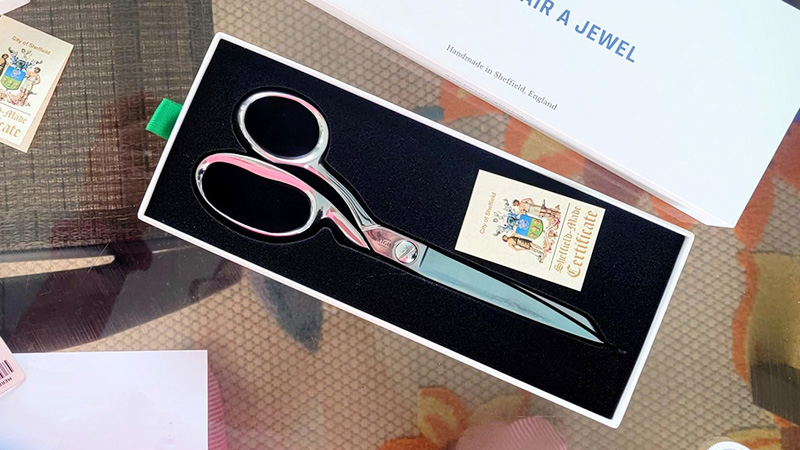
Scissors are an essential tool used for cutting various materials. They consist of two blades connected together by a pivot point, which allows them to open and close. The blades are made of a metal such as stainless steel and have sharpened edges.
When the handles of the scissors are squeezed together, the sharpened edges of the blades slide against each other, cutting through whatever material is between them.
Scissors can be used to cut fabric, paper, hair, or other materials, making them a versatile tool for a variety of tasks. They are also relatively easy to use, making them a popular choice for both professionals and hobbyists.
3. Thimble
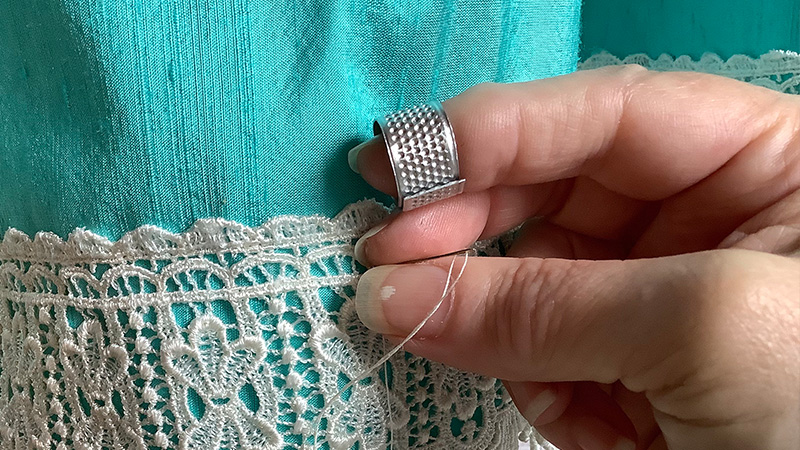
A thimble is an essential tool for any sewer. It is a small cup-like object that fits on the finger and protects it from being pricked or stabbed by a needle. It is made of metal, plastic, or other materials and may come in different sizes and shapes.
The origin of the word ‘thimble’ dates back to Old English, when it was spelled ‘þȳmel’. This word is derived from ‘þūma’, the ancestor of the English word ‘thumb’.
The thimble is designed to fit snugly over the thumb so that it can be used for pushing the needle through fabric while sewing. It is an essential tool for any sewer, as it helps to protect their fingers from being pricked or stabbed by the needle.
It also helps to ensure that the needle is pushed through the fabric in a smooth and even manner. The thimble is a simple yet effective tool that has been used for centuries to help sewers create beautiful garments and fabrics.
4. Tape Measure
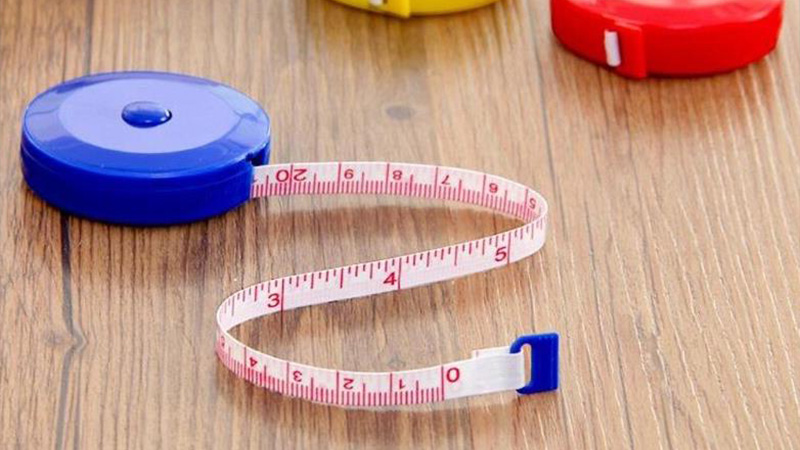
A tape measure is an essential tool that is used to measure length or distance. It is usually made of a ribbon of cloth, plastic, fiber glass, or metal strip and contains linear measurement markings along its length.
Tape measures are commonly found in many households and workplaces, as they are used for a variety of tasks such as measuring furniture, curtains, and other items in the home.
They are also used in construction and engineering projects to accurately measure distances.
Tape measures can vary in length and width, and are typically marked in both imperial and metric units. They usually have a hook or lip on one end, which allows the user to easily measure objects that are not flat.
In addition, some tape measures come with additional features such as locking mechanisms, which enable the user to easily keep the tape measure in place when taking measurements. Using a tape measure is relatively straightforward.
To measure an object, the user simply has to align the beginning of the tape measure with the starting point of the object and pull the tape out until it reaches the end of the object.
The user then reads the measurement off the markings on the tape measure. In conclusion, a tape measure is a simple yet essential tool that is used to measure length or distance. It is highly versatile and can be used in a variety of settings, from the home to the workplace.
5. Pincushion
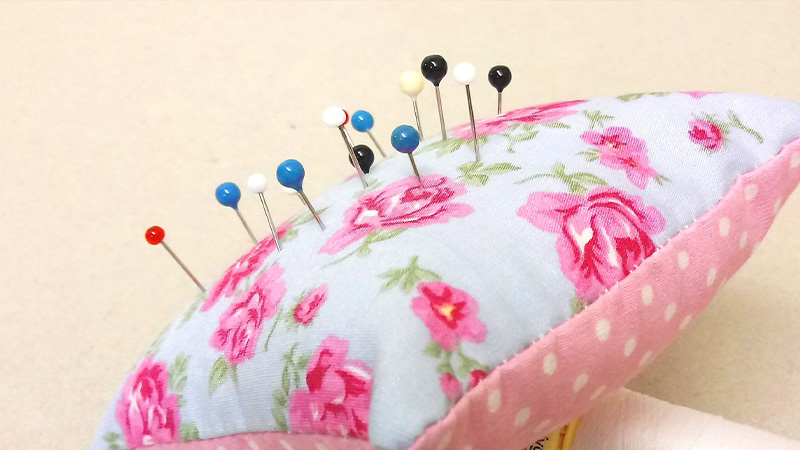
A pincushion is an essential tool for any sewer. It is a small, stuffed cushion that is usually around 3-5 cm in diameter. The purpose of a pincushion is to store pins or needles with their heads protruding in order to make it easier to grab and organize them.
This allows sewers to keep their needles and pins close by and organized so they can easily reach for them when needed. The pincushion is filled tightly with stuffing to ensure that the pins stay in place and do not move around.
This helps sewers to easily find the pins they need without having to search through a pile of loose pins.
It also prevents the pins from becoming bent or damaged, which can be a nuisance when sewing. In addition to storing pins, pincushions can also be used to store other sewing supplies such as buttons, thread, and small scissors.
This makes them a handy tool to have in any sewing kit or workspace. The stuffing used in pincushions can also be changed or replaced over time to keep the cushion full and prevent the pins from slipping out.
Overall, pincushions are a useful tool for sewers to keep their pins and needles organized and close by. They are also a great way to store other small sewing supplies, making them a must-have for any sewing enthusiast.
6. Sewing Machine
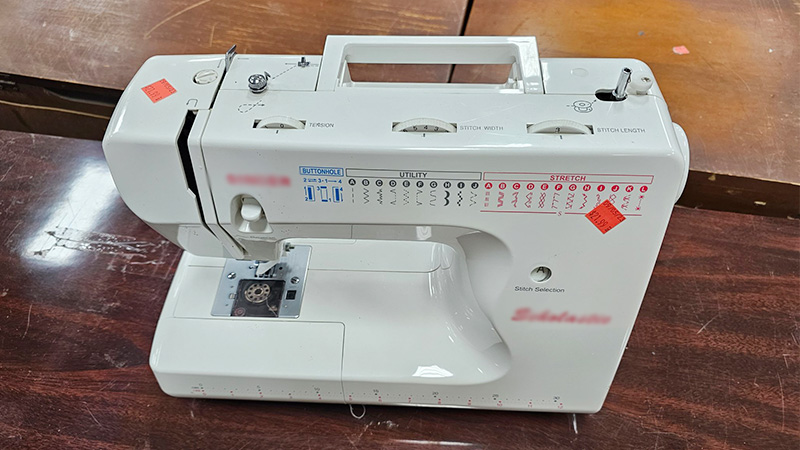
A sewing machine is a device that uses thread and needles to stitch together fabric, material, and other items. It was invented during the first Industrial Revolution in order to reduce the amount of manual sewing work in clothing companies.
The invention of the sewing machine revolutionized the clothing industry, drastically increasing the speed and accuracy of the sewing process. The machine uses a single thread and two needles to lock two pieces of fabric together.
This process eliminates the need for manual sewing, which was previously done by hand. The machine also creates a consistent stitch, which is much more difficult to achieve when sewing by hand.
The invention of the sewing machine greatly reduced the time it took to create clothing, allowing clothing companies to produce more garments in less time.
It also made clothing more affordable for the general public, as the cost of producing clothing decreased.
The sewing machine has also contributed to the development of many different types of fabrics, such as denim and leather, as it allowed the fabrics to be stitched together with ease and precision.
Today, sewing machines are used in many industries, from clothing and textiles to automotive and home décor. They are also used by many hobbyists and home sewers to create their own unique garments and projects.
Sewing machines have come a long way since their invention during the Industrial Revolution, and they continue to be an invaluable tool in the fashion and textile industries.
7. Tracing Wheel
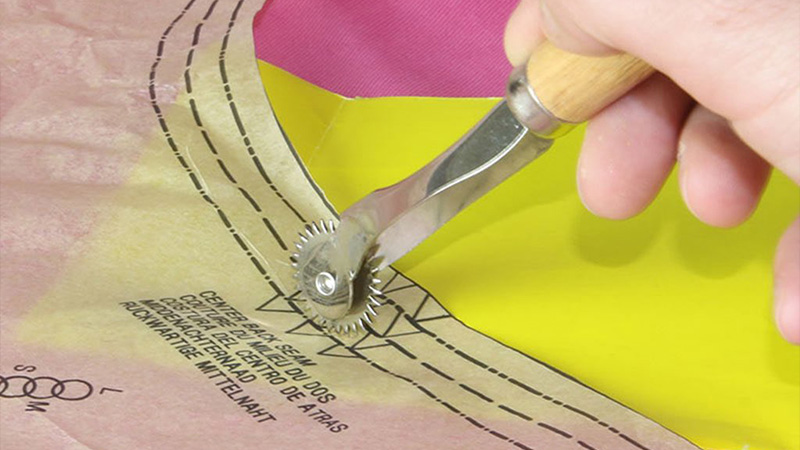
A tracing wheel is an essential tool in many craft and sewing projects. It consists of a wheel with multiple teeth attached to a handle. The wheel is usually made of metal or plastic, and the handle is typically made of wood or plastic.
The teeth of the wheel can be either serrated or smooth. A tracing wheel is used to trace patterns onto fabric, paper, or other materials. The wheel is held firmly against the pattern and rolled along the line of the pattern.
The teeth on the wheel make impressions in the fabric or paper, allowing a seamstress or crafter to easily transfer the pattern onto the desired material.
It is a great tool for accurately reproducing patterns and designs. Tracing wheels are also commonly used in quilting and embroidery projects. The wheel is used to accurately mark the fabric with the pattern or design.
This allows for precise and even stitching. Without a tracing wheel, it can be difficult to stitch a pattern accurately, as it is difficult to keep the pattern in place while stitching. Tracing wheels are also used in paper crafts.
They are used to transfer patterns and designs onto paper to create cards, scrapbook pages, and other paper crafts.
The wheels can easily cut through thicker paper, making it easier to get a clean cut. Tracing wheels are a must-have tool for anyone who loves to sew, quilt, or craft.
They are an essential tool for accurately and precisely transferring patterns and designs onto fabrics and paper.
8. Rotary Cutter
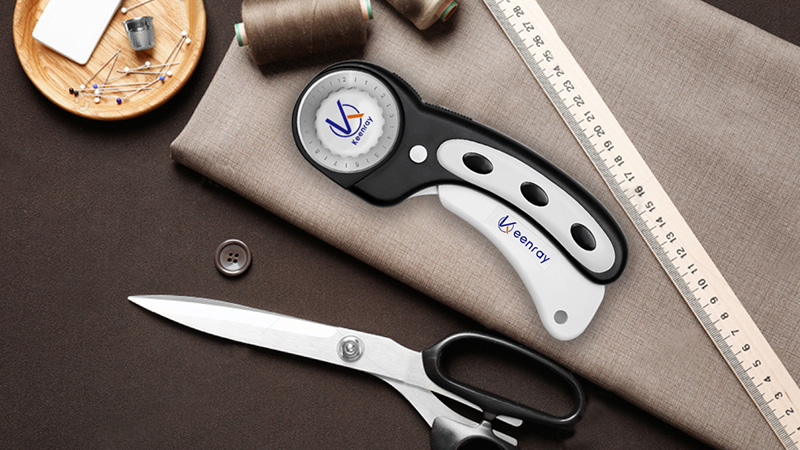
A rotary cutter is a tool used by quilters to cut fabric. It is designed with a handle and a circular blade that rotates, hence the tool’s name. The circular blade is adjustable, allowing quilters to set the size of their cuts precisely.
By rotating the blade, the fabric is cut quickly and accurately without having to manually pull a blade back and forth. Quilters also use the tool to make precise angles and curves.
The rotary cutter is also a time-saving tool which can be used to cut multiple layers of fabric at once. This allows quilters to create larger pieces of fabric quickly.
Additionally, the rotary cutter can be used to make precise cuts with ease, making it a very useful tool for quilters. By using a rotary cutter, quilters can quickly and accurately create a wide variety of fabric pieces, from small to large.
9. Sewing Needle
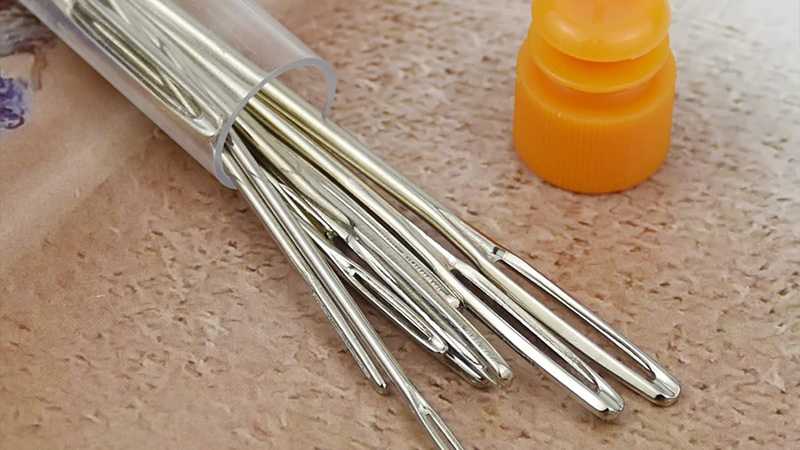
A sewing needle is an essential tool when it comes to hand-sewing. It is a long, slender object, with a pointed tip at one end and a hole at the other end that is used to hold the sewing thread.
The earliest needles were made from bone or wood, but modern needles are typically made from high carbon steel wire and are then nickel- or 18K gold-plated to provide corrosion resistance.
This type of needle is very durable and can be used for many sewing projects. The pointed end of the needle is used to puncture the fabric and create a hole for the thread to pass through.
The hole in the needle is also used to thread the needle, ensuring that the thread is securely attached to the needle before sewing.
The needle’s shape also helps to guide the thread through the fabric and helps to reduce snagging and tangling of the thread.
10. Ironing Board
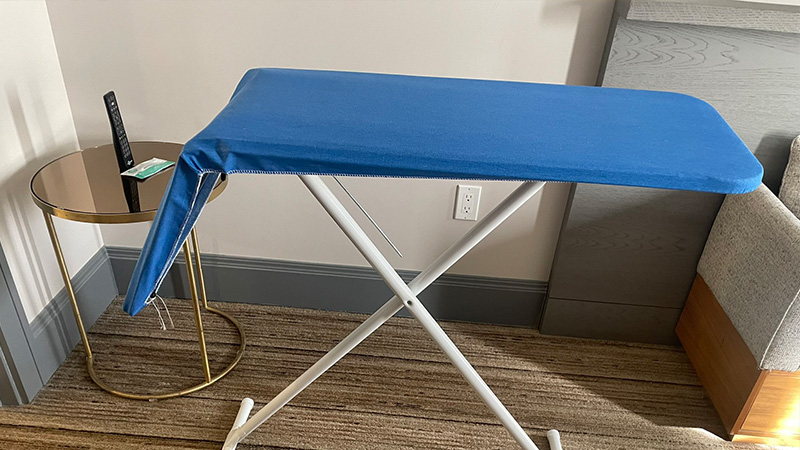
An ironing board is an essential tool for achieving professional sewing results. It provides a flat, padded surface to press and flatten fabric, ensuring smooth and wrinkle-free textiles.
The adjustable height feature caters to personal comfort, while the sturdy construction offers stability during the ironing process. With its convenient folding design, the ironing board is easy to store when not in use.
Whether preparing fabric for sewing or giving finished garments a polished look, the ironing board is a versatile companion for any sewing enthusiast, contributing to the overall quality and precision of their creations.
11. Pin
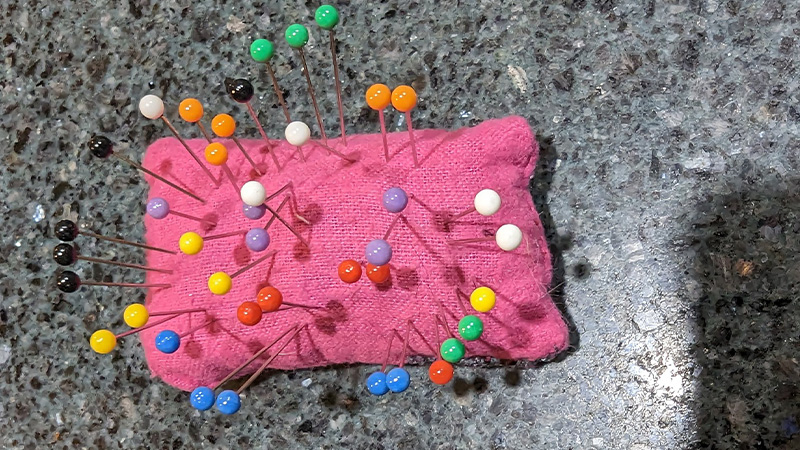
Pins are a very versatile tool that can be used in a variety of settings. They are made in different types and styles to meet different needs.
The most common type of pin is the shaft pin, which consists of a rigid, inflexible material that is inserted into a pre-made hole or slot. The most common type of material used is metal, but pins can also be made of plastic, wood, and other materials.
The shaft pin is used for fastening two objects or fabrics together. It is often used in sewing, quilting, and embroidery. In addition to the shaft pin, there are other types of pins that are used for specific purposes.
For example, bobby pins are used to secure hair in place, and safety pins are used to secure items such as clothing, diapers, and other items with small openings.
Also, decorative pins are used to add a decorative touch to clothing and other fabrics, such as scarves and bags. No matter what type of pin is used, it is important to make sure that it is securely fastened.
When using pins, it is important to make sure that they are properly inserted in the appropriate hole or slot. This will ensure that the pin is securely in place and will not become loose or move.
Additionally, when removing a pin, it is important to use the proper tools. Using the wrong tools can damage the pins or the fabrics being secured.
12. Measurement
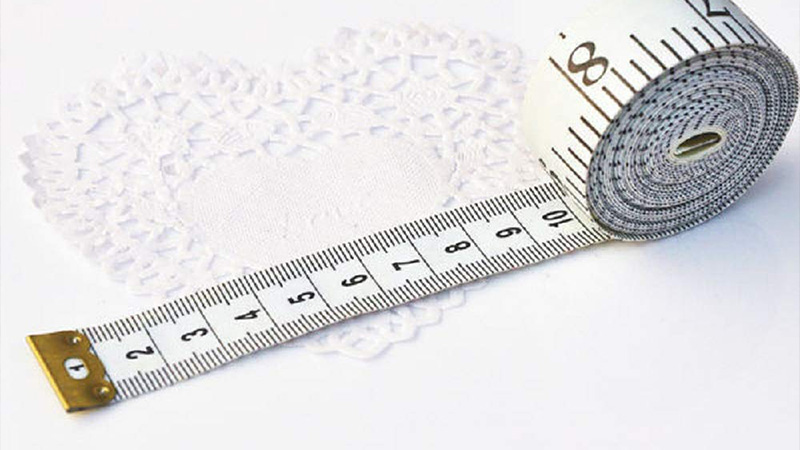
Measurement is an essential part of scientific inquiry and everyday life. It is the process of quantifying the attributes of an object or event in order to compare it with other objects or events.
Through the use of measurements, we are able to compare apples to oranges or a car’s speed to a train’s speed. Measurement is essentially the comparison of one physical quantity to a basic reference quantity that is the same kind.
This reference quantity is known as a unit. Examples of units include inches, meters, seconds, and pounds. The size of the unit is determined by the scientific community.
For instance, one inch is equal to 2.54 centimeters. Measurement is used to calculate the length, width, height, weight, time, temperature, speed, and other physical properties of an object or event. It allows us to make an accurate comparison between two or more objects or events.
Therefore, measurement is a critical tool in developing scientific knowledge and understanding the world around us. From measuring the distance between two cities to calculating the temperature of a room, measurement is an important part of our lives.
13. Ruler
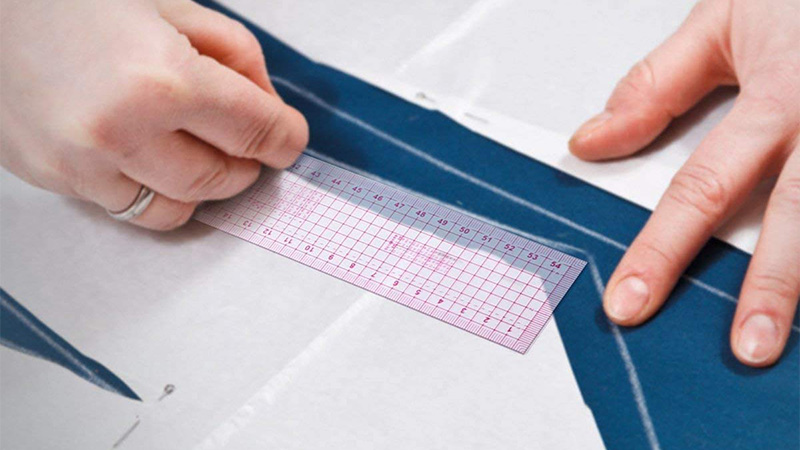
A ruler is an essential tool used for measuring length. It may also be referred to as a line gauge, rule, or scale. It is made up of a series of straight markings along the edge, known as ‘rules’. The user can estimate a length by reading from the various markings on the ruler.
It is used to make length measurements accurately and is commonly found in both home and office environments. The most common type of ruler is the metal ruler, which is usually made from steel or aluminum and is very durable.
It often has metric units on one side and imperial units on the other side. The markings on the ruler are usually divided into centimeters or millimeters and inches.
Depending on the type of ruler, it can also have other markings such as degrees, points, and other increments.
Rulers can be used for a variety of tasks such as measuring for sewing, measuring for drawing, or measuring for carpentry.
They can also be used to measure the width of a room or the length of a piece of fabric. Regardless of the task, a ruler is an essential tool for accurately measuring length.
14. Tailor’s Chalk
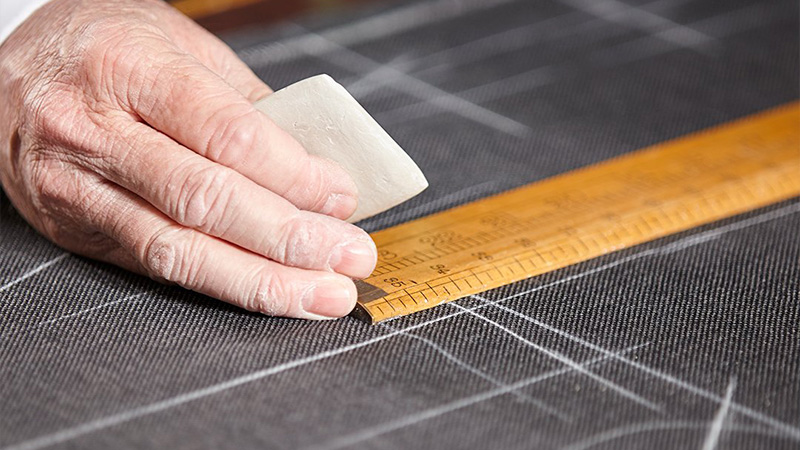
Tailor’s chalk is an indispensable tool in sewing, used for marking fabric with temporary guidelines. With its smooth, waxy texture, it provides accurate lines that can be easily brushed or washed away after sewing.
Available in various colors, the tailor’s chalk contrasts well with different fabrics, ensuring clear visibility. Its versatility makes it ideal for transferring pattern markings, creating hems, and marking alterations.
Unlike permanent markers, the tailor’s chalk ensures precision without damaging the fabric. This makes it a trusted companion for seamstresses, enabling them to execute their projects with precision and finesse, resulting in well-fitted and beautifully crafted garments.
15. Textile
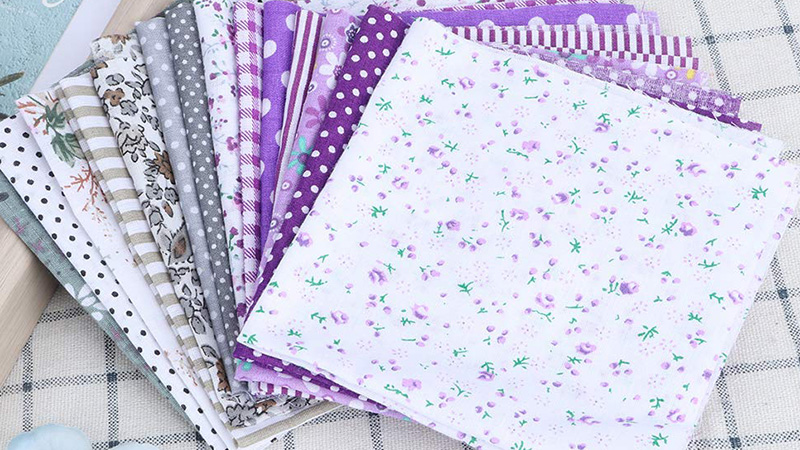
Textile is a broad term that encompasses many types of fiber-based materials. These materials include fibers, yarns, filaments, threads, and different fabric types.
Historically, the word “textiles” only referred to woven fabrics, or fabrics that are created by interlacing two sets of yarns.
However, as technology and industry has advanced, the term has become more inclusive and now encompasses fabrics created through a variety of techniques including knitting, crocheting, felting, and more.
Textiles have been used to create clothing, blankets, and other household items for thousands of years. This ancient practice has evolved over time, and now more advanced techniques are used to produce a variety of fabrics with unique characteristics and properties.
For example, some fabrics are designed to be waterproof, while others are designed to be lightweight and breathable. Different fabrics can also be combined to create fabrics with multiple properties.
The production of textiles is a complex process that involves spinning, weaving, dyeing, and finishing. Depending on the desired end product, different processes are used to create the desired fabric.
For example, some fabrics are created by interlacing two sets of yarns, while others are created through a knitting process. Similarly, the dyeing process can be used to create different colors and patterns.
Textiles are an essential part of modern life and are used to create a wide variety of products. From clothing and blankets to furniture and upholstery, textiles are used in almost every facet of life.
They are also used in industrial applications, such as in the production of car parts and other materials. Without textiles, many of the products we use on a daily basis would not exist.
16. Thread
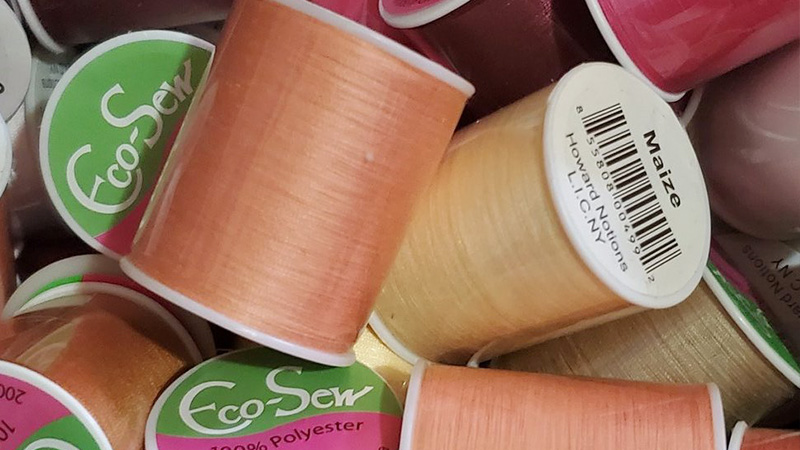
Thread is a vital component of most textiles, and it is the foundation of many clothing and décor items. Thread has been used for centuries to create items that are both functional and stylish.
In early human history, the Egyptians were known for their use of thread to join, create, and decorate textiles. They used a variety of materials to make thread, including plant fibers, wool, and hair.
The Egyptians were the first to spin fibers into yarn, which is the foundation of any type of thread. Plant fibers, such as flax, were commonly used to create yarn.
The Egyptians also used wool and animal hair, such as alpaca, llama, and sheep, to make thread. By combining different fibers, the Egyptians were able to create a variety of thread textures and colors. Thread was an important part of ancient Egyptian life.
Not only was it used for clothing and decorations, but it was also used for mending and wrapping items.
It was used to create intricate patterns and designs for clothing and decorations, and the Egyptians believed that thread had spiritual and magical powers.
Thread was also used to bind books, decorate scrolls, and create intricate tapestries. Thread has been an important part of human life for centuries, and it continues to be a vital part of the textile industry.
Whether it is used for clothing, decorations, or mending, thread is an essential part of our lives. The Egyptians were the first to use thread, and their innovative techniques have been passed down through the generations.
Thread has been used to create a variety of beautiful and functional items, and the Egyptians’ legacy continues to be appreciated to this day.
17. Cutting Mat
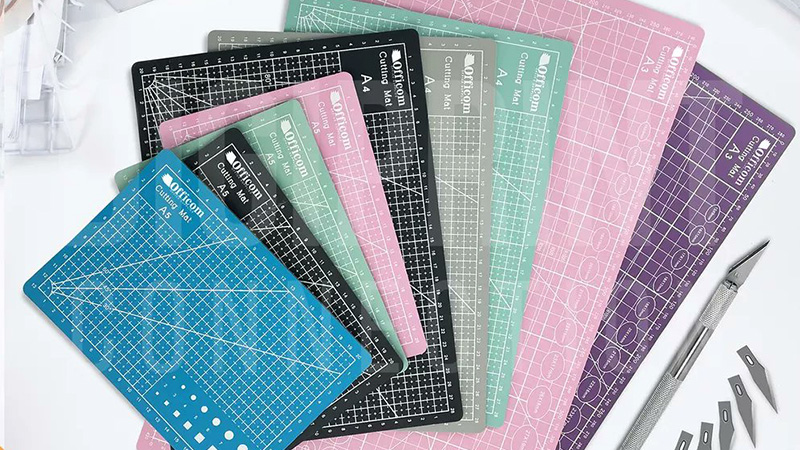
A cutting mat is a vital tool for sewing and crafting, designed to protect surfaces while providing accurate measurements. Its durable, self-healing surface safeguards tables and counters from cuts and scratches caused by rotary cutters and knives.
The gridlines and measurements on the mat aid in precise fabric cutting and alignment, ensuring consistent results. Available in various sizes, cutting mats accommodate different project scales.
This versatile tool is essential for quilters, sewists, and crafters, enabling them to work efficiently and maintain the integrity of their workspaces. A cutting mat is an indispensable asset for anyone seeking precision in fabric and material cutting.
18. Pinking Shears
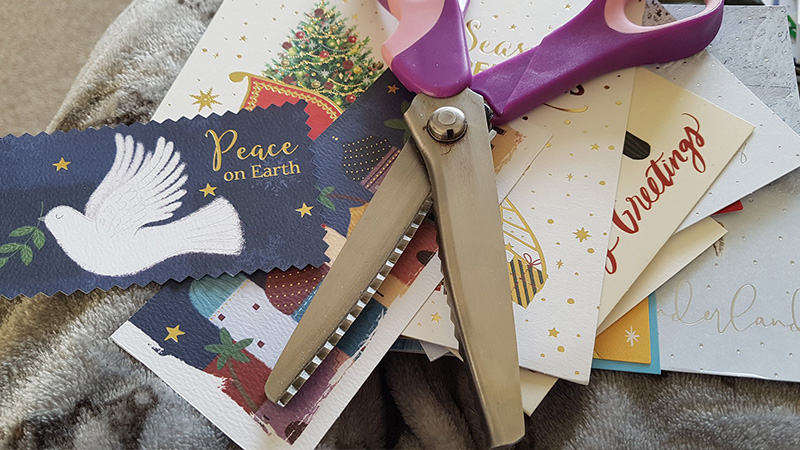
Pinking shears are a type of scissors that have blades with jagged, saw-toothed edges, resulting in a zigzag pattern when cutting. This pattern is often used in sewing and other crafts to create a decorative edge or hem.
Before the invention of pinking shears, a tool called a pinking punch or pinking iron was used to create the same effect. This tool was used to punch a decorative hem on a piece of fabric, creating a similar zigzag pattern.
Pinking shears made the process of creating decorative edges much quicker and easier. Today, pinking shears are commonly used by crafters and seamstresses to create unique and beautiful designs.
19. Sewing Machine Needle
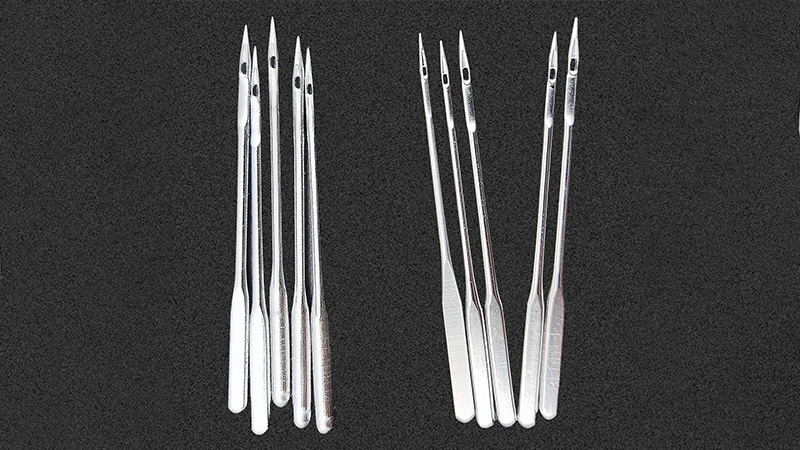
A sewing machine needle is a vital part of a sewing machine, as it is used to stitch fabrics together. The needle is composed of two distinct parts, the shank and the shoulder.
The shank is the portion of the needle that is held in the sewing machine’s needle holder. The needle holder is a device that holds the needle in place and allows the sewing machine to move the needle up and down as it creates stitches.
The shoulder is the part of the needle that is thicker than the shank and is responsible for guiding the thread as it is pulled through the fabric. The thread is passed through the eye of the needle before being pulled through the fabric.
The thread is then secured in place when the needle moves back up and the stitch is complete. The shoulder of the needle is also responsible for keeping the thread from becoming tangled as it passes through the fabric.
Sewing machine needles come in a variety of sizes, shapes, and materials. The size of the needle is usually determined by the type of thread and fabric used, as different sizes and shapes of needles are better suited for different fabrics.
For example, needles with large eyes are better for thicker threads, while needles with a sharp point are better for fine fabrics.
The material of the needle can also vary, with some needles being made from stainless steel or titanium, while others may have a coating to make them more resistant to wear.
No matter what type of sewing machine needle is being used, it is important to maintain the needle and replace it regularly in order to ensure that the fabric is being stitched properly and without any issues.
It is also important to make sure that the needle is properly secured in the needle holder to prevent any damage to the fabric.
20. Sewing Gauge
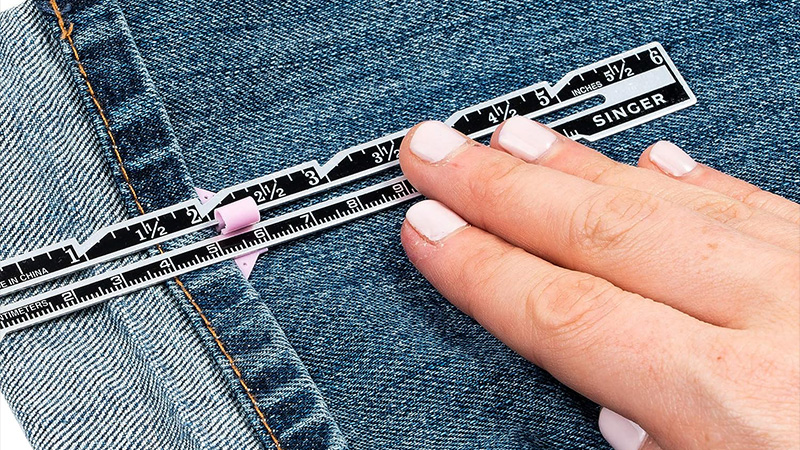
A sewing gauge is a ruler that is typically six inches in length and used for measuring small distances. It is made of metal, with markings in inches and centimeters on both sides.
Its design is similar to that of a caliper, as it has a sliding pointer that can be used to measure the distance between two points accurately. The pointer slides along the scale at set intervals, allowing for precise measurements even for the most intricate sewing projects.
The small size of the ruler makes it easy to carry and store, making it a valuable tool for any sewer’s kit. It is also ideal for measuring hems, pleats, and other small details that require accuracy.
With the help of a sewing gauge, sewers can ensure that all of their projects are perfectly tailored to their needs.
21. Tailor’s Ham
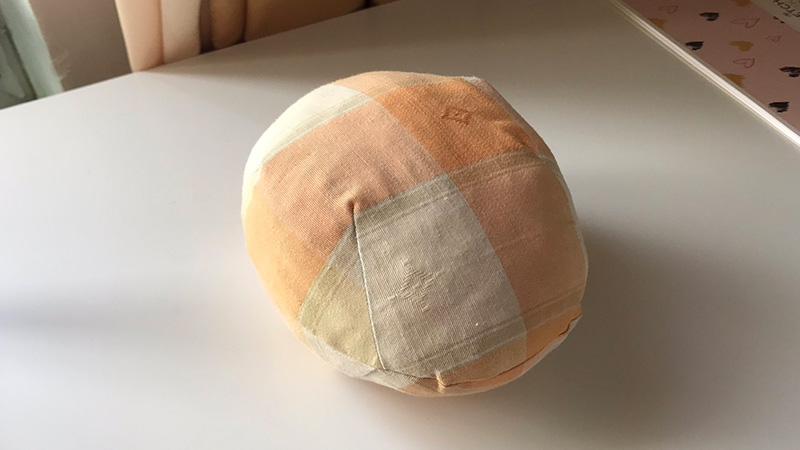
A tailor’s ham or dressmaker’s ham is an essential tool for creating a flawless finish on clothing. It is a tightly stuffed pillow-shaped form used to press curved areas of clothing, such as darts, sleeves, cuffs, collars, and waistlines.
Using a curved form ensures that the garment will fit better to the body contours, creating a professional-looking finish. Tailor’s hams are typically made of wool or cotton fabric and are filled with a material such as sawdust, cotton batting, or foam.
They are available in a variety of sizes and shapes, depending on the garment being worked on. By pressing the fabric on the curved form, the tailor can create the desired shape and fit, giving the garment a polished, finished look.
22. Hook-and-eye Closure
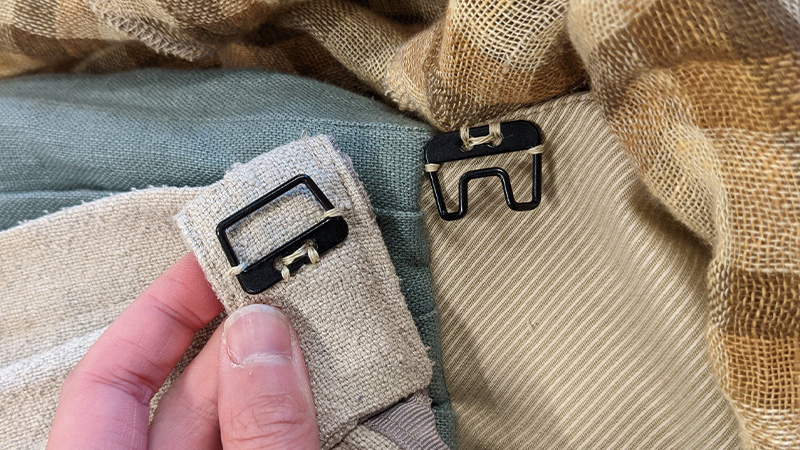
A hook-and-eye closure is a reliable and straightforward way of fastening clothes together. It is composed of a metal hook, usually created by wire bending, and an eye, made from the same material, that the hook fits into.
This type of closure is commonly used on clothing such as dresses, blouses, skirts, and jackets, as well as other garments. This type of closure is very easy to use and is incredibly secure.
To use it, the hook is placed into the eye, and the two pieces are pushed together, creating a strong connection. This connection is secure enough to keep clothing from coming undone or becoming loose.
Some garments will even have multiple hook-and-eye closures for extra security. Hook-and-eye closures have been used for centuries and are still a popular choice today.
They are often preferred over traditional metal buttons or zipper closures because they are much simpler and more secure. Additionally, they are much easier to use and install than traditional buttons or zippers, making them an ideal choice for many people.
23. Sewing Kit Needles
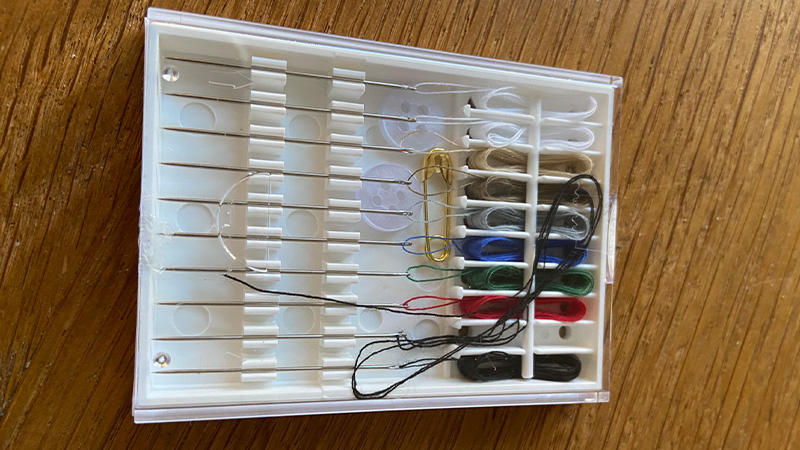
Sewing kit needles are essential components of any well-equipped sewing arsenal. Available in a variety of types and sizes, these needles cater to diverse fabric and project needs.
From universal needles for general sewing to specialized options like embroidery and quilting needles, a sewing kit covers all bases. The compact packaging ensures convenience and portability, making it easy to carry needles for on-the-go repairs or creative endeavors.
Whether mending a seam or engaging in intricate stitching, sewing kit needles play a pivotal role in achieving clean, professional results, making them a must-have for both novices and experienced seamstresses alike.
24. Marking Pen/ Chalk
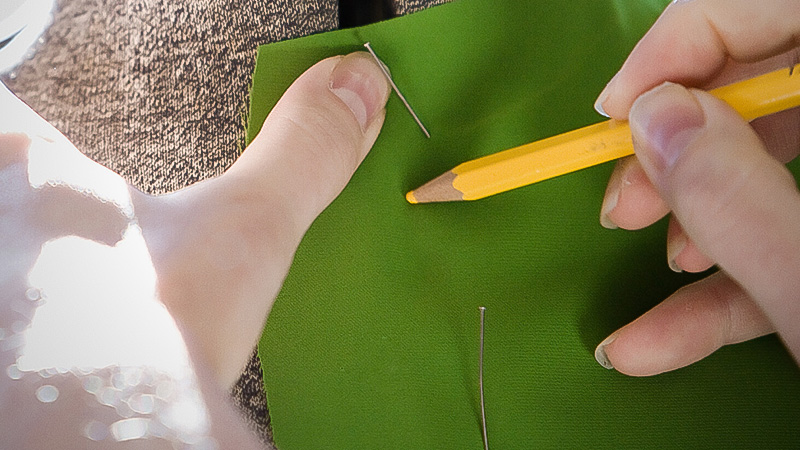
A marking pen or chalk is a precise tool used in sewing to temporarily mark fabrics with guidelines, patterns, or alterations. With a fine tip, fabric marking pens provide accurate lines that vanish with heat or water, leaving no trace after sewing.
Chalk, available in various colors, contrasts well against different fabrics, ensuring visibility. These tools aid in transferring pattern notations, creating hems, or indicating seam allowances.
Unlike permanent markers, marking pens and chalk preserve the integrity of fabrics, allowing for precise sewing without leaving permanent marks. Seamstresses rely on these tools to achieve meticulous and flawless stitching outcomes.
Conclusion
Sewing tools and equipment are the backbone of successful crafting and garment creation. Whether you’re a beginner or an experienced sewer, these tools are indispensable for achieving precision, efficiency, and creativity in your projects.
From the fundamental needles and thread to the advanced sewing machines and specialty tools, each piece plays a crucial role in transforming your ideas into tangible creations.
By recognizing the value of investing in high-quality tools, you empower yourself to embark on sewing journeys that yield not only impeccable results but also a sense of accomplishment and pride in every stitch.
Your sewing experiences become not just tasks, but artistic expressions that embody your skills and passion.
Leave a Reply